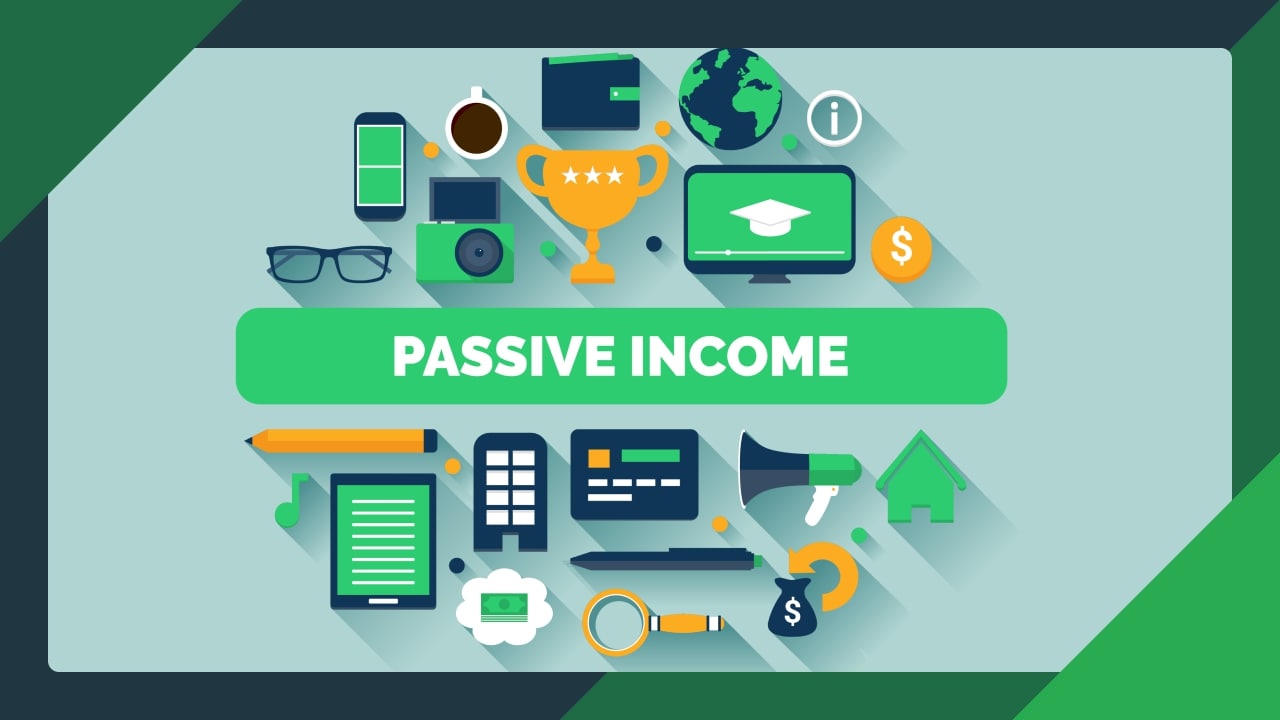
Unlocking Financial Freedom: Passive Income Ideas for 2025
In an increasingly dynamic and digital world, the pursuit of financial independence has never been more relevant. Traditional employment, while providing a stable income, often limits personal time and growth potential. This is where passive income steps in – a powerful concept that allows your money to work for you, generating earnings with minimal ongoing effort after the initial setup.
As we look towards 2025, technological advancements, shifting consumer behaviors, and a more interconnected global economy are creating unprecedented opportunities for building passive income streams. This article will delve into a comprehensive range of passive income ideas poised for growth in 2025, exploring their potential, requirements, and how you can leverage them to achieve greater financial freedom.
Understanding Passive Income: Beyond “Get Rich Quick”
Before diving into specific ideas, it’s crucial to clarify what passive income truly means. It’s not about doing nothing and getting rich overnight. Instead, it involves significant upfront effort, capital, or a unique skill set to build an asset or system that then generates recurring revenue with little to no active management. Think of it as planting a tree: you put in the hard work of digging, planting, and initial watering, but once it’s mature, it continues to bear fruit with minimal tending.
The “passive” element refers to the reduced time commitment required after the initial heavy lifting. In 2025, automation, AI, and digital platforms are making it easier than ever to create and manage these “income trees.”
Top Passive Income Ideas for 2025
Let’s explore some of the most promising avenues for generating passive income as we approach the middle of the decade.
1. Digital Products & Online Courses
The knowledge economy continues to thrive. If you have expertise in a particular field, you can package it into digital products or online courses.
- eBooks & Guides: Write an eBook on a niche topic, design an aesthetic guide, or create templates (e.g., Notion templates, social media templates). Platforms like Amazon KDP, Gumroad, and Etsy make distribution straightforward. In 2025, AI tools can assist with outlining, initial drafting, and even cover design, making content creation more efficient.
- Online Courses: Develop comprehensive courses on platforms like Teachable, Thinkific, or Udemy. Once created, these courses can generate sales for years. The demand for specialized skills, vocational training, and hobby learning is ever-present. Consider incorporating interactive elements or AI-powered feedback for enhanced learning experiences in 2025.
2. Affiliate Marketing
Affiliate marketing involves promoting products or services of other companies and earning a commission for every sale or lead generated through your unique affiliate link.
- Content-Driven Affiliate Marketing: Create a blog, YouTube channel, or a niche website that provides valuable content related to products you recommend. For instance, a tech review site, a healthy cooking blog, or a travel guide.
- Social Media & Influencer Marketing: Leverage platforms like Instagram, TikTok, or Pinterest to showcase products and drive traffic to affiliate links.
As AI tools become more sophisticated in content optimization and audience targeting, affiliate marketing can become even more precise and effective in 2025. Focus on building trust with your audience; authenticity is key.
3. Rental Properties (Traditional & Short-Term)
Real estate remains a cornerstone of passive income, offering stable returns and appreciation.
- Long-Term Rentals: Purchasing residential or commercial properties and renting them out for extended periods. While it requires significant capital and initial management, property managers can handle day-to-day operations, making it more passive. In 2025, smart home technology and advanced property management software can further streamline operations.
- Short-Term Rentals (e.g., Airbnb): Renting out spare rooms or entire properties for short durations. While more hands-on than long-term rentals, services like dynamic pricing tools, automated check-ins, and local cleaning services can significantly reduce the active management required, pushing it towards a passive model. The rise of digital nomads and remote workers in 2025 could further boost this market.
- REITs (Real Estate Investment Trusts): For those with less capital, REITs allow you to invest in portfolios of income-generating real estate without direct property ownership. They trade like stocks on major exchanges and typically pay high dividends.
4. Dividend Stocks & Bonds
Investing in dividend-paying stocks or high-yield bonds is a classic passive income strategy.
- Dividend Stocks: Companies that regularly distribute a portion of their earnings to shareholders. Research companies with a strong history of consistent dividend payments and healthy financials.
- Bonds: Debt instruments issued by governments or corporations that pay regular interest payments.
- Robo-Advisors: In 2025, automated investment platforms (robo-advisors) can manage your portfolio based on your risk tolerance and financial goals, making this strategy even more passive.
5. Peer-to-Peer (P2P) Lending
P2P lending platforms connect individuals who want to borrow money with individuals willing to lend it. As a lender, you earn interest on your loans.
- Diversification: To mitigate risk, it’s crucial to lend small amounts to many different borrowers.
- Platform Choice: Choose reputable platforms with strong credit assessment models.
- While carrying higher risk than traditional investments, P2P lending can offer attractive returns. Regulatory clarity and more sophisticated credit scoring models may make this option more appealing in 2025.
6. Royalty Income (Music, Photography, Art)
If you’re a creative individual, your work can generate royalties for years to come.
- Stock Photography/Videography: Upload your photos and videos to platforms like Shutterstock, Adobe Stock, or Getty Images, and earn a commission each time someone licenses your work. The demand for unique visual content is constant.
- Music Royalties: If you produce music, distribute it through platforms that pay royalties for streams, downloads, or licensing for use in films, commercials, or games.
- Digital Art/NFTs: The rise of NFTs (Non-Fungible Tokens) allows artists to earn royalties every time their digital art is resold on the blockchain, creating a new form of passive income for creators. As the NFT market matures and gains broader adoption in 2025, this could become a significant avenue.
7. Automated Online Services & SaaS
For those with technical skills, developing a Software as a Service (SaaS) product or an automated online service can be highly lucrative.
- Subscription-Based Tools: Create a tool that solves a specific problem for businesses or individuals (e.g., a social media scheduler, a project management tool, a niche AI writing assistant). Users pay a recurring subscription fee.
- No-Code/Low-Code Platforms: In 2025, the proliferation of no-code and low-code development platforms means you don’t necessarily need to be a seasoned programmer to build a functional SaaS product. This lowers the barrier to entry significantly.
- Chatbots/AI Assistants: Develop specialized AI chatbots or virtual assistants that businesses can license for customer service or lead generation.
8. Dropshipping & Print-on-Demand (POD)
These e-commerce models require initial setup but can be highly automated.
- Dropshipping: You sell products online without holding any inventory. When a customer places an order, you purchase the item from a third-party supplier who then ships it directly to the customer.
- Print-on-Demand: You create designs for products (t-shirts, mugs, phone cases), and a POD company prints and ships them only when an order is placed.
Both models rely heavily on effective marketing and customer service. In 2025, AI tools can significantly aid in product research, trend analysis, and even automated customer support, making these ventures more passive.
9. Vending Machines & Laundromats
While seemingly old-fashioned, these businesses can be surprisingly passive with the right setup.
- Vending Machines: Identify high-traffic locations, purchase machines, stock them, and collect cash. Modern vending machines offer cashless payments and remote monitoring, reducing the need for constant physical presence.
- Laundromats: A laundromat can be largely self-sufficient once established. With smart card systems and security cameras, owners can manage them remotely.
These options require significant upfront capital but can provide steady cash flow with minimal daily effort.
Key Considerations for Building Passive Income in 2025
Building passive income streams requires more than just picking an idea; it demands strategic planning and execution.
- Initial Investment (Time, Capital, or Skill): Every passive income stream requires an initial investment. Be realistic about what you can commit.
- Patience and Persistence: Passive income rarely materializes overnight. It takes time for digital content to rank, for properties to appreciate, or for investments to compound.
- Diversification: Don’t put all your eggs in one basket. Create multiple streams to mitigate risk and accelerate your journey to financial freedom.
- Continuous Learning: The market is constantly evolving. Stay updated on new technologies (especially AI), consumer trends, and investment opportunities.
- Automation & Outsourcing: Leverage technology and virtual assistants to automate tasks and outsource operations that are not your core competency.
- Understanding Tax Implications: Passive income is still taxable. Consult with a financial advisor to understand the tax implications in your region.
- Risk Management: Every investment carries risk. Thoroughly research any opportunity and understand the potential downsides before committing.
Conclusion
The landscape of passive income is rich with opportunities as we head into 2025. Leveraging digital advancements, embracing emerging trends, and applying strategic thinking can empower you to build robust income streams that provide financial security and the freedom to live life on your own terms.
Whether you choose to create digital products, invest in real estate, or explore the world of automated online services, the key is to take action. Start small, learn continuously, and consistently work towards building assets that work for you. The future of financial independence is within reach for those willing to plant the seeds of passive income today.


